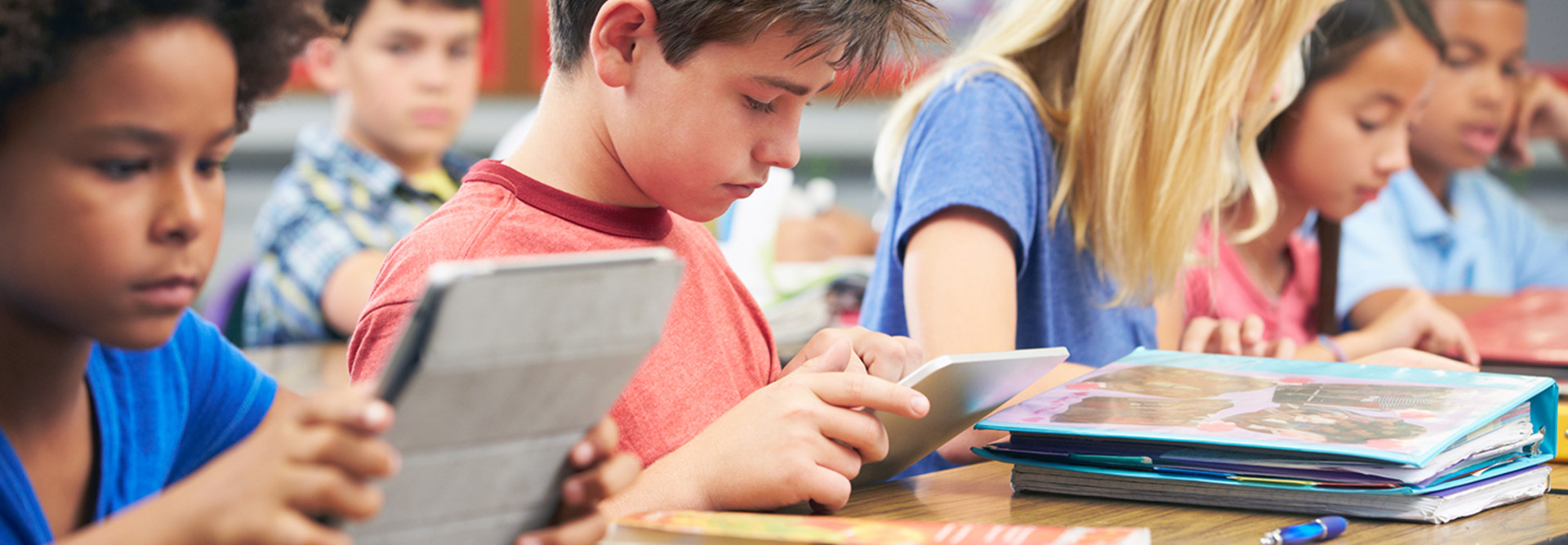6 Ways Technology Helps Educators Tackle Low Literacy Rates
As teachers, we don't have a lot of control over what goes on at home, so tackling the literacy rate starts in school. The reality is that a big percentage of middle and high school students scored below proficient in reading and writing.
Low literacy is critical not just for the individual who will most likely struggle to find work, but also for the economy as a whole, as unemployment costs the country billions every year.
Educators have to get creative and take advantage of the many free and useful tech tools out there. Adapting lessons to fit every learner's needs is far from an easy task, but these six tools can help make it simpler, clearer and more engaging for everyone.
Technology itself is not going to end the literacy epidemic in America. It's our responsibility as teachers to use it creatively and effectively, constantly finding new ways to grow our classrooms.
SIGN UP: Get more news from the EdTech newsletter in your inbox every two weeks!
1. Text-to-Speech Apps Assist Students with Learning Disabilities
Voice reading apps, or text-to-speech apps, are great tools for struggling readers. The app plays the text aloud so students can listen as they read along.
It's especially helpful for students with dyslexia and other learning disabilities, increasing reading speed, reducing stress and improving comprehension. There are free tools — like one offered by Google — that can be used while browsing the internet, as well as downloadable e-book readers.
Microsoft has also introduced immersive reading tools to help students of all abilities with reading comprehension.
2. Word Clouds Let Students Think Outside the Box
A word cloud is a great way to visually display words within a text and help students make connections and understand key words before reading.
You can use classroom devices and have students copy and paste text into word cloud generators, like Wordle or WordItOut, to create beautiful, colorful word clouds that can prompt discussion questions before and after reading the text.
Students can discuss why they think certain words appear more than others, understand how they relate to each other and find deeper meaning when the words are put into context.
3. Digital Project-Based Learning Encourages Comprehension
Using media to drive a point home, whether it's in language arts, history or even physics, is always helpful because it allows kids to make connections and apply what they've learned to other mediums.
With digital project-based learning, students get into groups and work together to create something digital, such as a video, website or blog post, to show understanding.
For instance, after reading Shakespeare, have students work together to make videos of modern-day scenes from the play. They'll gain a deeper understanding by likening Shakespeare to things they can relate to and work on their digital skills at the same time.
Digital projects are also a great way to augment writing assignments, as students can create a video or digital animation to go along with their writing. Using technology for creation also helps to facilitate active learning.
4. Game-Based Learning Is More Engaging
A surefire way to grab kids' attention is through games, and the internet is full of them!
With a quick Google search, you can find online games for anything from vocabulary to grammar to spelling and more. You can project games on a SMART Board for the class to play together or have students play on individual computers or tablets.
Games are so effective because they can simplify complicated grammar rules and make them easier to understand in a fun and stimulating way.
5. Collaborative Tools Boost Writing Skills
Instead of giving writing assignments that only the teacher will read, make it interesting by posting students’ work online. If they know their work will be published on a blog for all the world to see, they'll probably work a bit harder to make their writing the best it can be.
Just like project-based learning, students can collaborate in their writing through Google Docs, where they can read each other’s work and give each other feedback. Correcting others' mistakes is a great literacy practice tool.
6. Electronic Word References Make for Smarter Dictionaries
Remember reading a book as a kid and coming across a word you didn't know? You had to find the dictionary and sift through it for the definition.
Today, dictionaries, thesauruses and encyclopedias are all online and at students' fingertips. It's important that we take advantage of these simple tools and encourage students to use them as often as they need, perhaps requiring students to make a weekly list of ten words they had to look up to increase understanding and retention.









